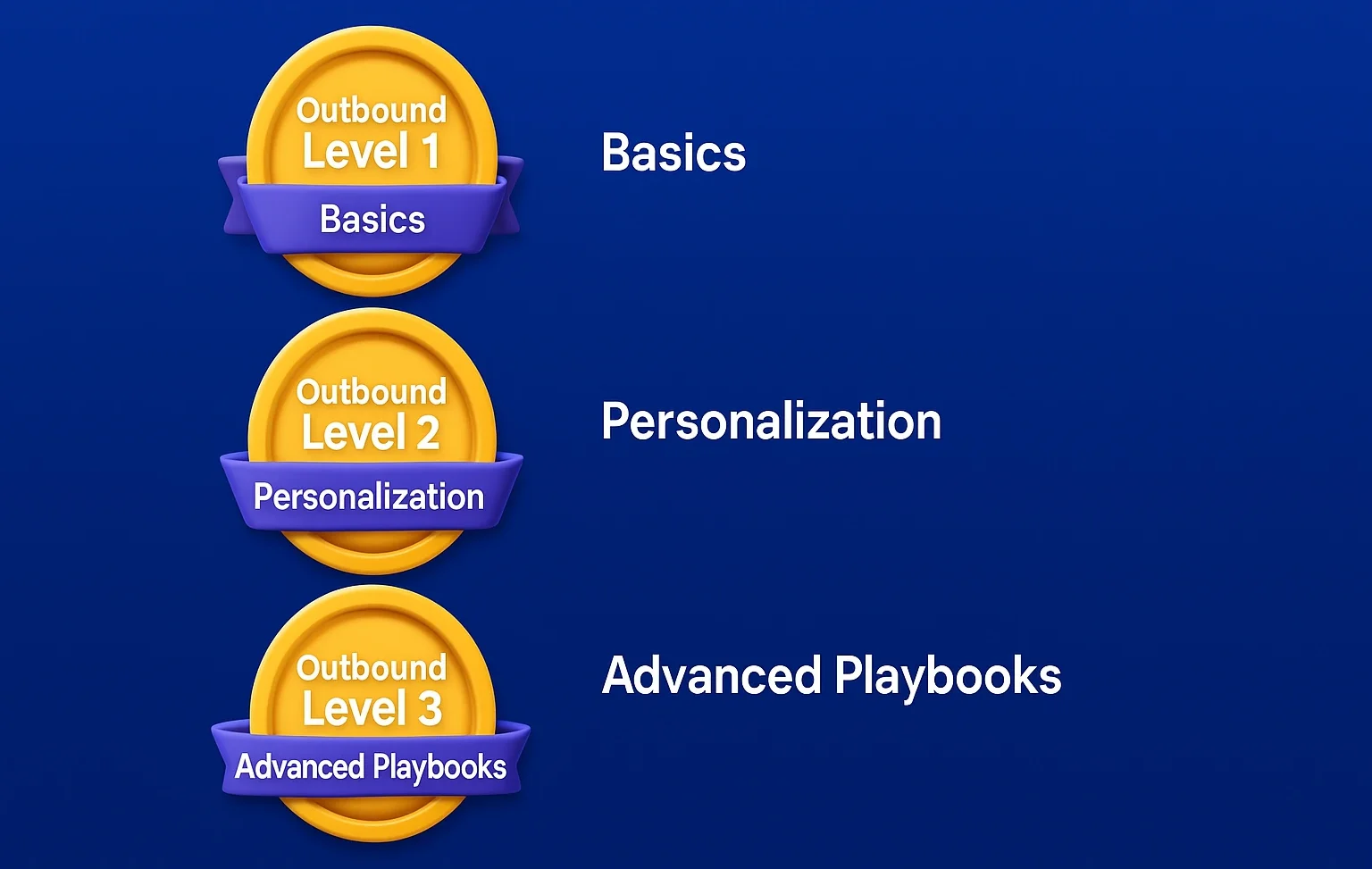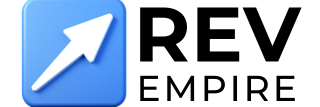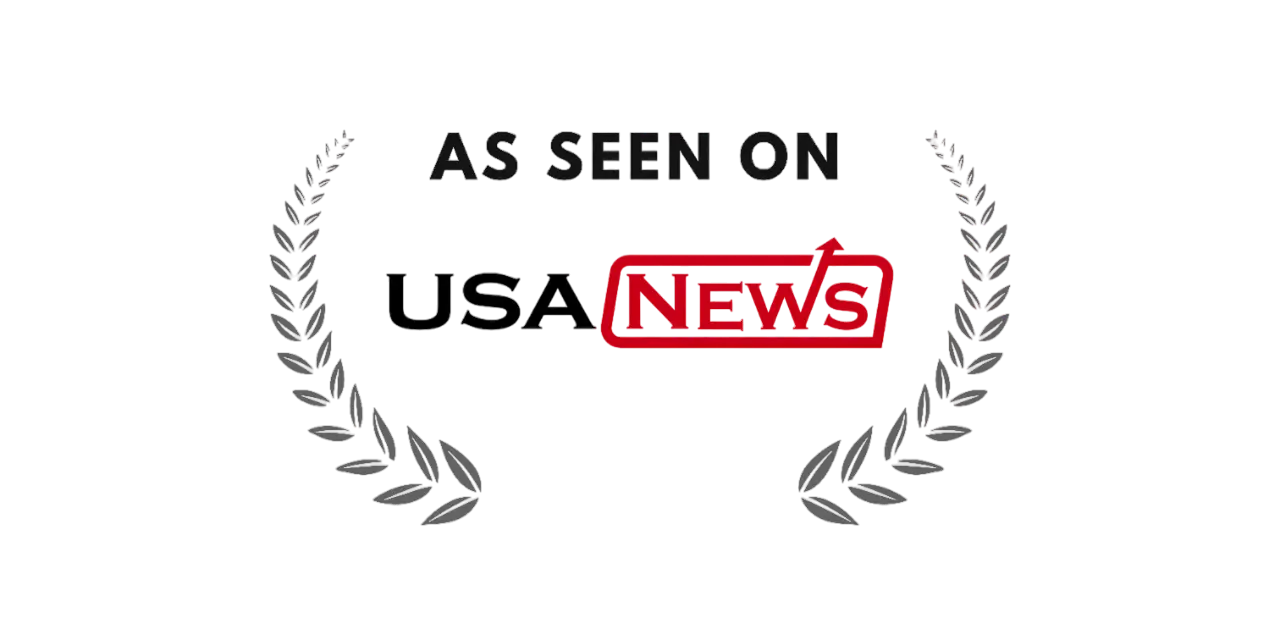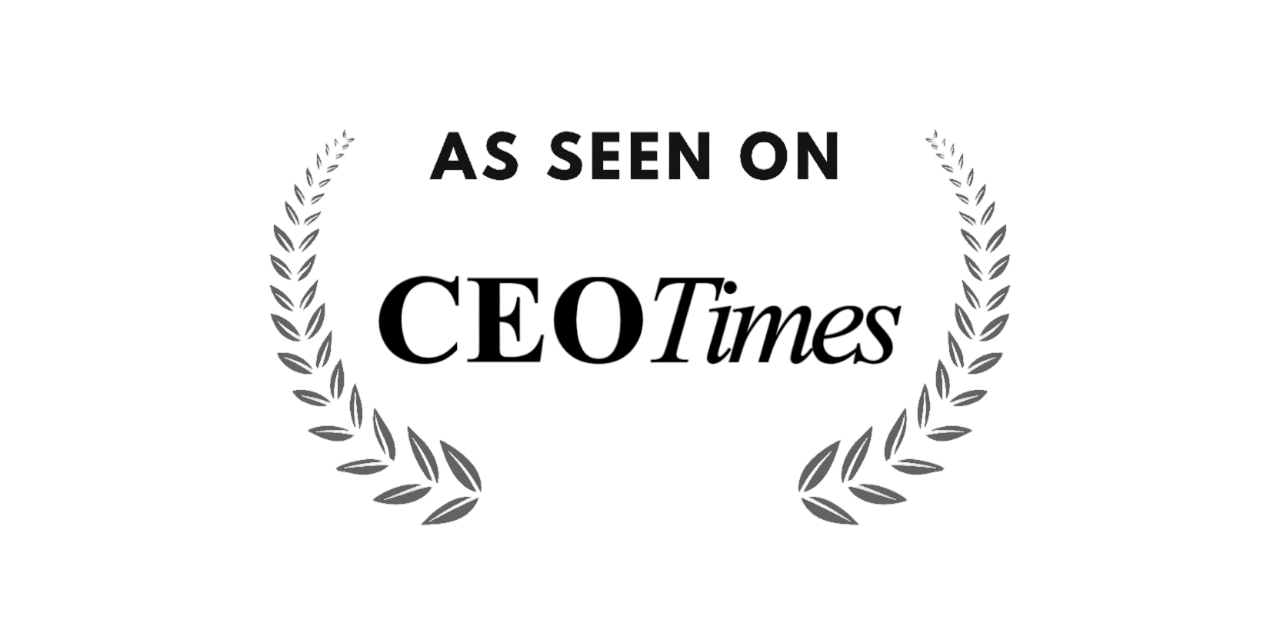Scaling Outbound Sales: 5 Best Practices for Enterprise GTM Teams

📅 Published: April 29, 2025 | ⏱️ 5–6 min read
Outbound success at enterprise scale demands precision, not just volume.
Introduction
Enterprise sales organizations thrive on predictability and scale, yet building a high-performing outbound sales program at enterprise scale is no small feat.
Many large companies struggle to achieve consistent pipeline from their SDR (Sales Development Representative) teams, even with significant resources.
In this post, we’ll dives into 5 proven strategies to scale outbound predictably across regions and personas.
These tips will help you improve efficiency, align teams, and ultimately drive more high-quality leads into your pipeline.
1. Segment Your ICP and Personalize at Scale
Enterprise teams often have broad markets. One key to outbound success is breaking your Ideal Customer Profile (ICP) into logical segments and tailoring your approach to each. Avoid one-size-fits-all targeting. Instead, leverage the rich data you have to segment and conquer.
Here’s how:
Map ICP by Region, Industry, and Tier:
Large firms usually serve multiple industries and regions. Create sub-ICPs if needed – e.g., financial services in North America might be one segment, mid-market tech companies in EMEA another. Also differentiate by company size/tier. Your messaging to a Fortune 100 account will differ from a $100M company.
Persona-Based Personalization:
Within each account, segment by buyer persona (executives, technical evaluators, end-users). Enterprise deals involve multiple stakeholders – tailor your outbound messaging to each persona’s interests. For example, a CIO cares about strategic ROI and integration, while a Director of Sales cares about hitting quotas and ease of use. Your outreach should reflect those angles.
Use Data and Signals:
At enterprise scale, you likely have access to intent data or at least firmographic data. Use tools to prioritize accounts showing buying signals (like recent funding, hiring spikes, or intent keywords). Within segments, rank prospects by these signals so reps focus where there’s heat.
By segmenting, you can create semi-custom cadences and templates for each segment that feel highly relevant. Yes, it’s more upfront work to create multiple outbound plays, but the payoff is higher response rates.
In one survey, 82% of B2B marketers agreed that segmenting campaigns leads to better results, and the same logic applies to outbound sales. Enterprise teams that treat, say, “Healthcare CFOs” as a distinct segment with tailored messaging will win more attention than those blasting a generic message to all.

2. Align Marketing and SDRs with Consistent Messaging
In big organizations, it’s common for marketing and sales to operate in silos. But when it comes to outbound, alignment is crucial. Your SDR team’s messages should harmonize with marketing campaigns, and both should reinforce the same value propositions.
Best practices for alignment:
Shared ICP and Value Props:
Ensure that the definition of your target customer and core messaging is agreed upon by marketing, SDRs, and sales leadership. If marketing is emphasizing one use case but SDRs pitch a different one, prospects get confused.
A strong relationship between marketing and sales is critical to success. Consider joint workshops to map customer pain points and craft messaging pillars everyone uses.
Content for Outbound:
Arm your SDRs with marketing content that can boost their outreach. This includes case studies, whitepapers, or blog posts addressing common customer challenges.
Interestingly, 79% of sales reps say sales enablement content is essential for closing deals. For outbound, content can warm up cold prospects. For example, an SDR’s follow-up email might include a relevant whitepaper (“Attaching an insight report by our team on [industry trend] you might find useful…”).
Marketing should create or repurpose content specifically for SDR touches (like bite-sized infographics or one-pagers that grab attention).
Regular Syncs and Feedback:
Hold at least monthly meetings between SDR managers and marketing to share what messaging is resonating. SDRs are on the front lines hearing objections – feed that back to marketing to adjust campaigns.
Conversely, if marketing is running a big webinar or event, brief the SDR team so they can mention it in outreach or follow up with attendees. This way, prospects see a cohesive story across channels.
When marketing and outbound sales play from the same sheet of music, you create multiple reinforcing touchpoints.A prospect who sees a helpful LinkedIn post from your marketing and then gets a call from your SDR mentioning the same pain point will feel like your company really understands them.
That consistency builds trust – an essential ingredient in winning over enterprise buyers.

3. Implement Multi-Touch, Multi-Channel Cadences (and Don’t Shy from Phone)
Enterprise buyers are busy and inundated with vendors. Reaching them requires persistence and creativity. The most successful outbound programs use multi-touch cadences that blend email, phone, LinkedIn, and sometimes direct mail or video.
Key elements of a winning cadence:
Sufficient Touches:
Don’t give up after one or two attempts. As mentioned earlier, many deals need 5+ touches. A robust enterprise cadence might span 4-6 weeks with 8-12 touchpoints in various forms.
This could be: Email 1, follow-up email, LinkedIn connection, phone call, voicemail, email referencing voicemail, LinkedIn message, etc., spread out strategically.
Research from Marketing Donut famously notes that 80% of sales require five or more follow-ups, yet many reps stop earlier. Enterprise sales often require even more patience and persistence (while staying professional).
Channel Orchestration:
Use a mix. Email is usually the backbone (for conveying detailed info and scheduling meetings). Phone calls are absolutely still effective in enterprise – direct dials or even well-placed voicemails can set you apart.
In fact, 56% of survey respondents ranked phone calls as the most effective way to close deals in one study, and while that’s about closing, it underscores that phone conversation opens doors. Also, a LinkedIn touch (profile view, connection, message) can warm up a cold prospect who might then recognize your name in an email.
Some teams also incorporate personalized video messages or mailing a small gift for ultra-high-value accounts (ABM style touches).
Timing Matters:
Use insights on the best times to reach execs – e.g., calling direct dials early (7:30–9am) or late (5–6:30pm) can catch a CXO at their desk outside meeting hours.
Emails might get higher response mid-morning or mid-afternoon mid-week. But don’t over-engineer! Consistency beats trying to guess the perfect moment every time.
By having reps execute coordinated cadences, you ensure no lead falls through the cracks without multiple attempts. Modern sales engagement platforms allow sequencing these touches and even semi-automating them while personalizing key elements.
That said, make sure your SDRs still personalize at least 20-30% of each message for the recipient – especially in enterprise, where boilerplate spam won’t fly.
📌 One pro tip: track engagement during the cadence. If a prospect clicks a link or opens emails repeatedly, that’s a trigger to perhaps accelerate or make a direct call since interest is indicated. Aligning cadence with prospect behavior can significantly boost efficiency.
4. Invest in Continuous Training and Playbook Refinement
Even veteran enterprise SDR teams need ongoing sharpening of the saw. Markets change, new objections arise, and fresh techniques emerge. A culture of continuous improvement keeps your outbound engine humming at peak performance.
Focus on:
Advanced SDR Training:
Go beyond the basics. Provide training on things like social selling (how to use LinkedIn effectively), handling complex objections, account research methods, and new tools (e.g., using intent data or sales AI).
Consider quarterly workshops or bringing in outside experts occasionally. For example, if your team struggles with getting past gatekeepers on phone calls, a specialist training on that can pay off in more conversations.
Battle Card Updates:
Ensure SDRs have up-to-date battle cards that list common objections and fresh responses. Enterprise buyers often have tough questions (“How are you different from X competitor?”, “We have no budget until next fiscal year”, etc.).
Role-play these scenarios regularly. Reiterate that “no” isn’t the end, it’s a chance to learn more.
Something important to remember: identifying the right decision-maker and addressing their concerns is crucial; many sales pros say reaching the right person is a top challenge in prospecting. Training should address how to find and engage multiple stakeholders too, not just one.
Playbook Iteration:
Leverage data from your cadences. Which email templates yield replies? Which call script gets prospects to stay on the line?
Use A/B testing where possible. Then feed those learnings back into the playbook. For instance, you might find that a sequence with a product demo video link gets more responses, incorporate that across the team.
Treat your outbound strategy as a living playbook that evolves. Document what works and ensure new SDR hires learn the latest best practices, not last year’s version.
Also, consider certification of SDRs on key skills. For example, certify all team members on delivering the 30-second elevator pitch, or on using the CRM correctly to track activities. This maintains a high baseline of quality.
Enterprise teams often have the budget for off-sites or bringing the globally distributed SDR team together periodically – use a portion of that time for collective training and knowledge sharing.
Let top performers share what’s working for them. A continuous learning approach keeps the team motivated and adapting – crucial in the fast-changing sales landscape.

5. Leverage Automation and AI, but Keep the Human Touch
At enterprise scale, volume is high. Automation and emerging AI tools can dramatically boost productivity, as long as you use them to enhance rather than replace the human touch.
How to smartly leverage AI and technology:
Automate the Busywork:
Use sales engagement platforms to automate email sequencing (while allowing personalization fields). Automate lead assignment, data entry (logging activities), and meeting scheduling (use automated schedulers as mentioned in earlier posts).
Free your SDRs from repetitive tasks so they spend more time crafting great messages and talking to prospects.
A study by CSO Insights found sales reps only spend 33% of their time actively selling – the rest is admin. The more you can cut that admin slice for SDRs, the more pipeline-generating activities they can do.
Embrace AI for Insights:
Today’s AI tools can help with things like account research (e.g., tools that summarize news about a company), writing first drafts of emails, or analyzing call recordings to highlight coaching moments.
For instance, an AI tool could analyze 100 sales calls and surface that mentioning a certain case study correlated with longer calls – insight you can share with the team.
AI can even help prioritize leads by predicting which accounts are warmer. Use these capabilities to augment your strategy.
Maintain Human Personalization:
While automation handles the grunt work, ensure each outreach still has a human touch. This means SDRs adding one or two custom sentences in emails referencing a prospect’s specific situation, or tailoring the call approach based on recent events at the account.
Buyers can tell if something is a generic mail merge. The goal of your tech stack is to enable reps to operate at scale without sounding robotic.
Track and Don’t Overdo:
With power of automation comes the risk of overloading prospects. Just because you can send sequences to 1,000 contacts doesn’t mean you should without thought. Quality > Quantity.
Use automation to handle volume, but segment and throttle thoughtfully to avoid coming off as spam factory. Monitor unsubscribe rates and email engagement. If they spike negatively, pull back and reassess messaging quality.
AI is an exciting frontier. Some enterprise teams are even using it to analyze what messaging resonates by analyzing responses in bulk, or to draft highly customized outreach based on public data. By all means explore these, but always review AI outputs; the human SDR’s understanding of nuance is irreplaceable for now.
📌 Case in point: many successful enterprise SDR teams use AI to draft say, 80% of an email, then the SDR adds the final 20% of polish and personalization. This saves time while keeping quality. Think of automation and AI as your co-pilots, not autopilots.
Wrapping Up: Enterprise Outbound Excellence
Scaling outbound sales in an enterprise setting is a challenge, but with the right best practices, it’s absolutely achievable to turn your SDR team into a predictable pipeline engine. Let’s recap the five best practices:
Segment and Personalize: Break down your ICP and tailor outreach to each segment and persona for maximum relevance.
Align with Marketing: Present a unified message and leverage marketing content to warm up prospects and reinforce your value prop.
Use Multi-Channel Cadences: Don’t rely on just emails – combine calls, emails, LinkedIn (and more) in a persistent, well-timed sequence to reach busy prospects.
Continuous Training: Never stop refining your team’s skills and your outbound playbook. Learn from data and invest in your people through coaching and resources.
Leverage Automation & AI Wisely: Scale up your efforts and insights with technology, but keep the personal, human element that enterprise buyers trust.
By implementing these, enterprise GTM teams can see improvements in contact rates, meeting set rates, and ultimately closed deals. It’s about working smarter and making the most of your resources.
📌 One more tip: measure everything. At enterprise scale, small percentage improvements have big absolute impacts. Track KPIs like emails sent, reply rates, calls made, connects, meetings set, SQL (Sales Qualified Leads) conversion, etc.
Use dashboards to spot drop-offs in your funnel. If your connect rate on calls is low, maybe your data quality needs attention; if your meeting conversion is low, maybe the pitch needs tweaking. Data-driven decisions will keep your outbound engine finely tuned.
Enterprise outbound is a team sport – coordinate with Marketing (as discussed), with Sales Engineers for technical validation when needed, and with AEs to ensure smooth handoff of opportunities. When a prospect that an SDR engaged finally talks to your AE, the conversation should feel like a continuation, not a restart.
Finally, ensure you celebrate wins. Enterprise sales cycles can be long, and outbound can be tough. When the team lands a big meeting or hits a monthly record, acknowledge it.
Share success stories internally . For example, how a personalized approach cracked a tough account. This keeps the team motivated to push through the inevitable rejections.
By following these best practices, your enterprise outbound sales program can achieve consistency and scale that truly moves the revenue needle.

Next Steps:
Looking for more insights and a structured approach to implement these tips?
Download our Ultimate B2B Outreach Playbook – a free 50+ page guide packed with templates, cadence examples, and advanced tactics drawn from real campaigns. It’s an invaluable resource for enterprise teams aiming to level up their outbound game.
Get the playbook here, put these best practices into action, and watch your pipeline grow. Here’s to your outbound success!
If you are looking to get high-volume campaigns done, we can help you build outbound systems that deliever.
Reach out to us at contact@rev-empire.com
Categories
Recent posts
Share on socials






